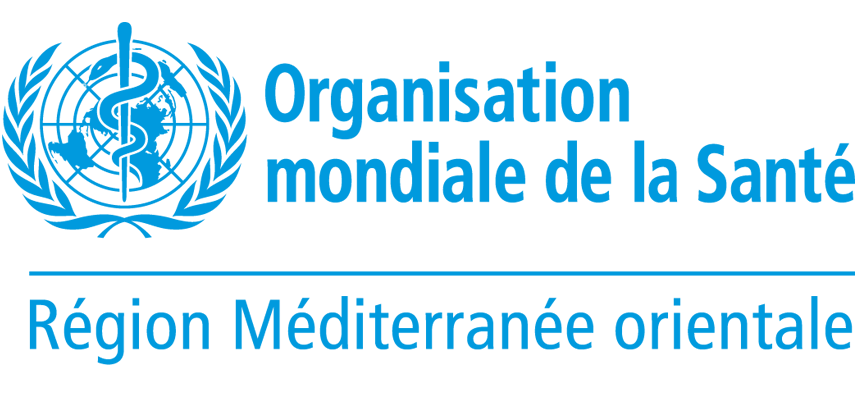Syrian national stakeholders assess preparedness for public health threats
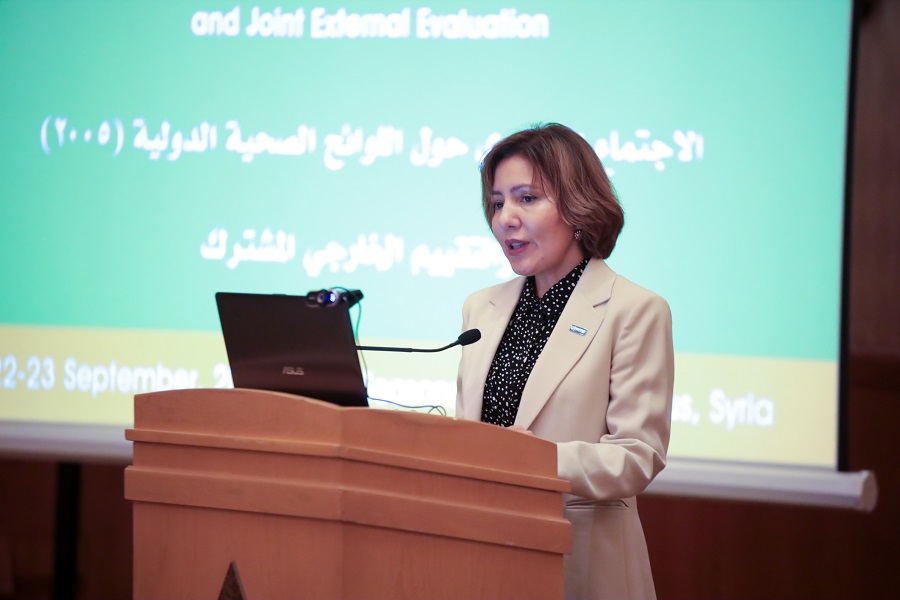
22 September 2021, Damascus – This week stakeholders from the Ministry of Health, Foreign Affairs, Education, Higher Education, Finance, Local Administration and Environment, Social Affairs and Labour, Water Resources, Agriculture, Defense, Interior, and Transportation will collectively assess the country’s capacity to address health threats and public health emergencies through a joint external evaluation (JEE) as part of the International Health Regulations (IHR)'s monitoring and evaluation framework.
Syria adopted IHR in 2007 and committed to enhancing the national core capacity to prevent, detect, assess, notify and report events, and promptly and effectively respond to public health risks and public health emergencies of international concern. The first JEE self-assessment in Syria was completed in December 2019, and this week’s consultative meeting of national stakeholders aims to update the self-assessment, reflecting the significant efforts and developments Syria has made while collectively responding to COVID-19 pandemic.
“Diseases have no borders, hence we must address health issues through partnerships. Health is everybody’s business and it affects our daily lives, economy, and the future of our children, especially now in the times of pandemic,” stated Dr Akjemal Magtymova, WHO Representative, in her opening remarks. “A founding member of the World Health Organization, Syria has collaborated with WHO across all sectors in addressing public health issues through the years of peace and crisis. Syria has a voice in steering the contemporary issues related to global health agenda,” Dr Akjemal Magtymova noted.
Throughout the next 2 days partners will assess the current national capacities to ensure health security across 19 technical areas, such as suvelliance, immunization, points of entry and other, through a comprehensive multisectoral approach by prioritizing opportunities and developing recommendations for enhanced preparedness and response to health threats.
Media contact:
Gulalek Soltanova
External Relations/Communications Officer
WHO Syria Office
Damascus, Syrian Arab Republic
+963 953 888 477
Update on COVID-19 vaccination in Syria, 22 September 2021
 Summary
Summary
As of 19 September 2021, a total of 610,257 doses of COVAX and bilateral donations delivered vaccines were administered in government-controlled areas and northeast Syria; and 119,158 doses in northwest Syria.
A total number of vaccinated people in government-controlled areas and northeast Syria is 448,399 (of which 271, 276 are fully vaccinated and 177,123 received their first dose). In northwest Syria, 119,158 people were vaccinated (of which fully vaccinated are 20,953 and those who have received their first dose are 98,205).
The Syrian Ministry of Health launched the nationwide vaccination campaign from 5 to 16 September 2021 targeting 394,031 people above 18 years old through 199 fixed facilities (hospitals and health centres) and 197 mobile teams in all governorates. Specific health facilities were selected to vaccinate an estimated number of 127,000 teachers to ensure the proper functioning of the education during the new school next year.
So far, 2% of the total population received at least one dose of the vaccine and only 1.2% completed their full vaccination schedule.
 Syria expects the arrival of the third batch of 170,400 doses of AstraZeneca vaccine supported by Sweden through the COVAX facility that will be administered in GoS and northeast Syria.
Syria expects the arrival of the third batch of 170,400 doses of AstraZeneca vaccine supported by Sweden through the COVAX facility that will be administered in GoS and northeast Syria.
The third batch of 358 000 doses of Sinovac vaccines supplied through COVAX arrived in northwest Syria Syria on 3 September 2021 and the fourth batch of 45,200 doses of AZ/AZD1222 from Sweden donation through COVAX was delivered to northwest Syria on 13 September.
Vaccination strategies
Two different vaccination strategies are applied in various parts of the country. In northwest Syria, the first batch of vaccines was used for the first dose vaccination, while in government-controlled areas and in northeast Syria (where vaccination is administered as part of the National Immunization Programme) the total quantity of available vaccines from the first batch were equally split into two parts to rollout the first and the second dose vaccination accordingly. With the second batches sent to overnment-controlled areas, northeast Syria and northwest Syria, the strategy is to use all available vaccines since new consignments are expected in the nearest future.
 Priority groups
Priority groups
As per the National Deployment and Vaccination Plan, the vaccination priority groups include high-risk population groups such as: 1) health workers; 2) the elderly; and 3) people with comorbidities. In the last vaccination campaign, teachers and education sector personnel have been added as well as all population above 18.
Challenges
As of September 2021, vaccines supplied under COVAX ensures so far the vaccination of less than 2.2% of the population of Syria with at least one dose. In addition, bilateral donations add further 2% to the vaccination rate, still Syria being at risk of not reaching the global target of 40% by December 2021.
Due to lack of knowledge and public trust in COVID-19 vaccine coupled with limited demand creation efforts, initially there was a visible hesitancy among the target population – even among health workers - to accept a COVID-19 vaccine. With the launch of the media campaign on vaccination, with more vaccines becoming available, with community-level efforts for demand generation, with more people receiving vaccines without severe side effects, the public confidence in vaccines grew gradually.
Every sector in Syria has a role to play in addressing social determinants of health and influencing health outcomes
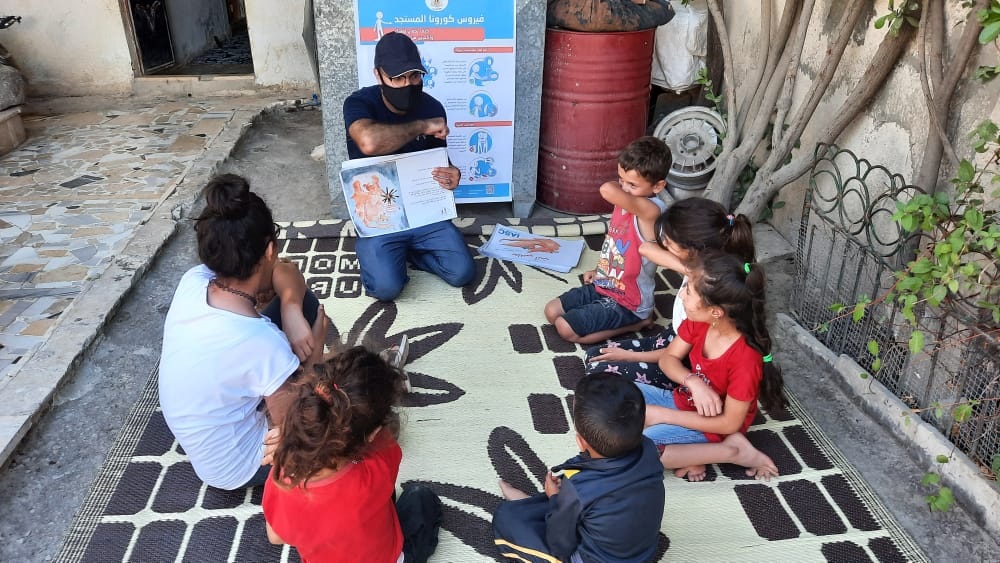
30 August 2021, Damascus – The conditions under which people are born, grow, live and age, as well as the forces and systems that shape the conditions of daily life, have an enormous impact on health outcomes. These non-medical factors are called the social determinants of health.
They include economic policies and systems, development agendas, social norms, social policies and political systems, all of which greatly influence health inequities. Peace and conflict, income and social protection, job security, education, food security, housing, social inclusion, and access to affordable social services – all influence equity and have an adverse or positive impact on health. Overall, the lower a person or community’s socioeconomic standing, the worse their health.
WHO strives to build back a fairer and healthier future for the people of Syria by providing the most vulnerable with lifesaving services. WHO addresses broader determinants of health through collaboration with social and economic sector partners in a bid to reduce social inequities, protect health rights and build resilient communities.
“The 2030 Agenda for Sustainable Development emphasizes the interconnectedness of social, economic, and environmental concerns, highlighting the importance of addressing the social determinants of health. Prevention is more cost-effective than treatment and health promotion must be an be integral part of healthy cities, villages and settlements if we are to achieve the Sustainable Development Goals,” said Dr Akjemal Magtymova, Head of Mission and WHO Representative in Syria. “Investment, policy and legislation that address emerging health threats at the community level and empower local governments to act quickly will ensure Syrians are better protected.”
Social determinants of health have been top of the agenda during discussions between the WHO Representative and line ministries in Syria this week. Meetings were held with the Ministers of Local Administration and Environment, Information, Higher Education and Scientific Research, Education, as well as Social Affairs and Labour. WHO will collaborate with ministries on safe school reopening and health education, waste management and safe water, sharing evidence-based information, and strengthening the research and academic curriculum on health as key intersectoral interventions that will positively influence the population’s health.
Dr Magtymova called on each sector to unite efforts to ensure quality services under their mandate and reconfirmed WHO’s commitment to partners to achieve better health outcomes for all.
COVAX supply update on COVID-19 vaccination in Syria, 19 August 2021
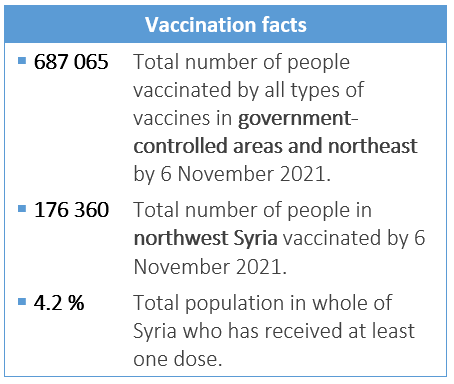 Summary
Summary
On 15 August 2021 Syria received the second batch of COVAX-facilitated AstraZeneca (AZ) vaccines with support from Sweden, amounting to 174 720 doses, 79% of which will be administered by the national immunization programme in Government-controlled areas and northeast Syria, and approximately 21% in northwest Syria through Gaziantep.
This follows the allocation criteria used for the distribution of the first batch of COVAX AZ vaccines (256 800) The first dose vaccine campaign in northwest Syria started on 1 May 2021 and is still ongoing with 49 130 people covered so far, while the campaign in the rest of the country was completed as of 30 June with 101 751 people vaccinated with the first dose.
The campaign for the second dose was launched on 13 July in Government-controlled areas and on 25 July in northeast Syria. In northwest Syria, the second dose vaccination campaign will start on 21 August.
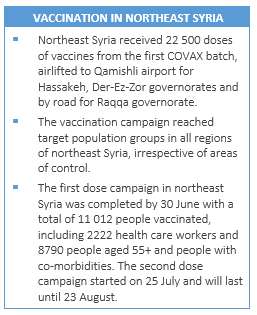 Vaccination strategies
Vaccination strategies
Two different vaccination strategies are applied in various parts of the country. In northwest Syria, the first batch of vaccines was used for the first dose vaccination, while in Government-controlled areas and in northeast Syria (where vaccination is administered as part of the national immunization programme) the total quantity of available vaccines from the first batch were equally split into two parts to roll out the first and the second dose vaccination accordingly. The second batch of the vaccines is going to help expand the coverage and high-risk target populations.
Priority groups
As per the National Deployment and Vaccination Plan, the vaccination priority groups include high-risk population groups such as: 1) health workers; 2) the elderly; and 3) people with co-morbidities.
Challenges
As in all countries, COVID-19 vaccination has been a novel process in Syria and several challenges were faced since the onset of the vaccination campaign.
As of August 2021, vaccines supplied under COVAX ensures the vaccination of less than 1% of the population of Syria. In addition, bilateral donations add a further 2% to the vaccination rate, still Syria risks not reaching the national target of 20% by December 2021.
Due to lack of knowledge and public trust in the COVID-19 vaccine coupled with limited demand creation efforts, initially there was a visible hesitancy among the target population – even among health workers - to accept a COVID-19 vaccine. While the national promotional campaign was suspended at the start of the COVID-19 vaccination campaign, with more vaccines becoming available, with community-level efforts for demand generation, with more people receiving vaccines without severe side-effects, public confidence in vaccines has gradually increased.
Joint efforts and way forward
WHO and partners reached out to health care workers at health facilities and through medical syndicates to increase vaccine uptake and confidence.
WHO and its partners – GAVI and UNICEF – worked together to secure the second batch of COVAX-facilitated vaccines in August and expecting consequent batches in the near future, with the estimated COVAX vaccines available to cover approximately 6% of the population.
